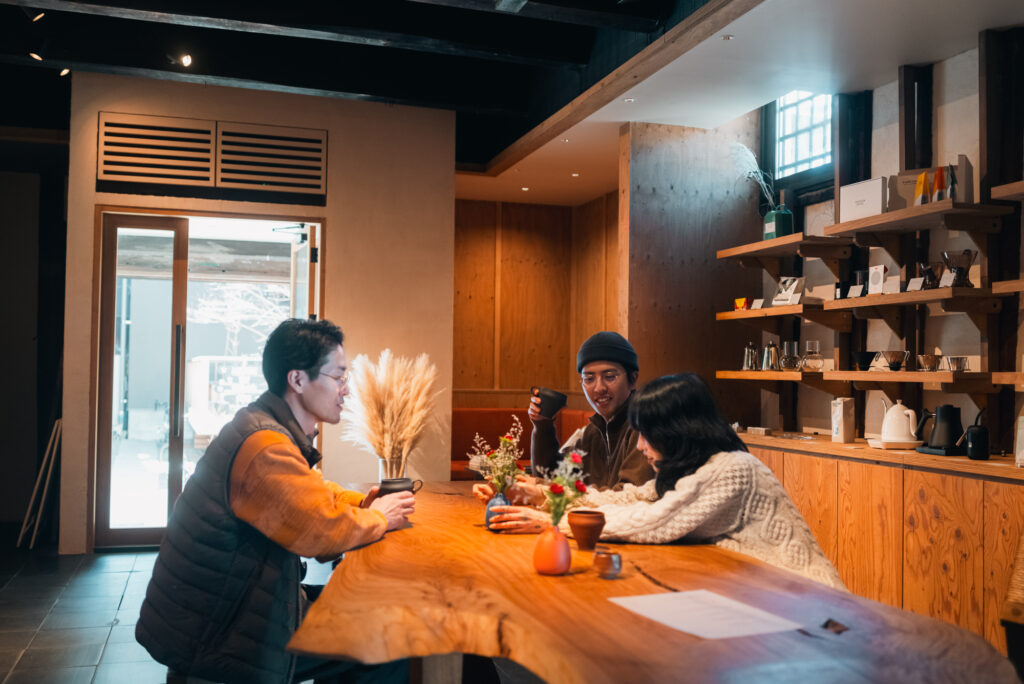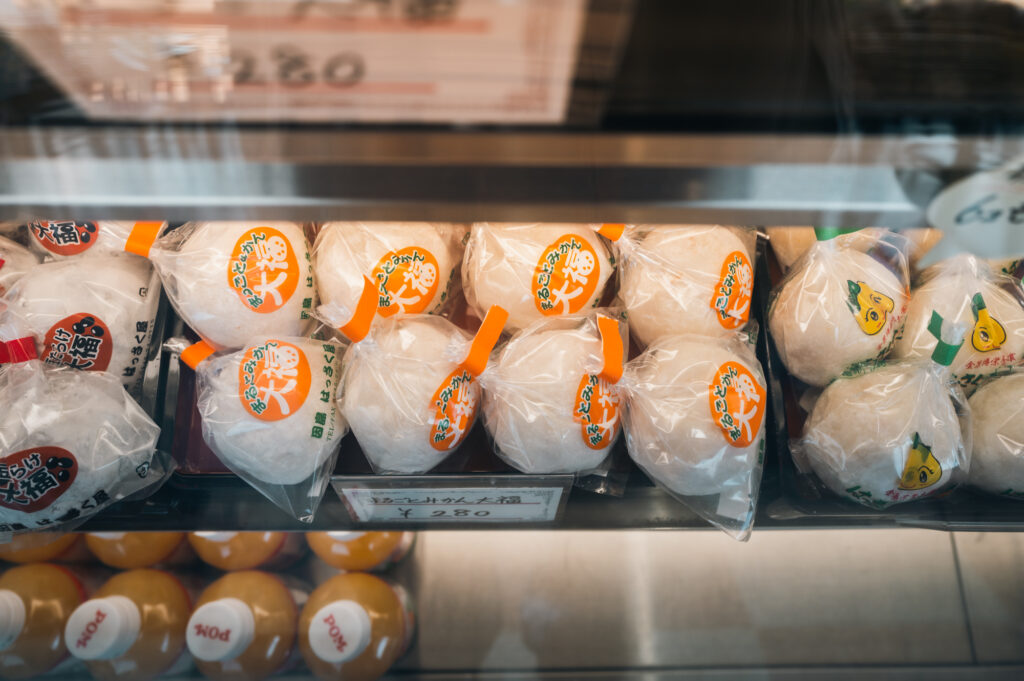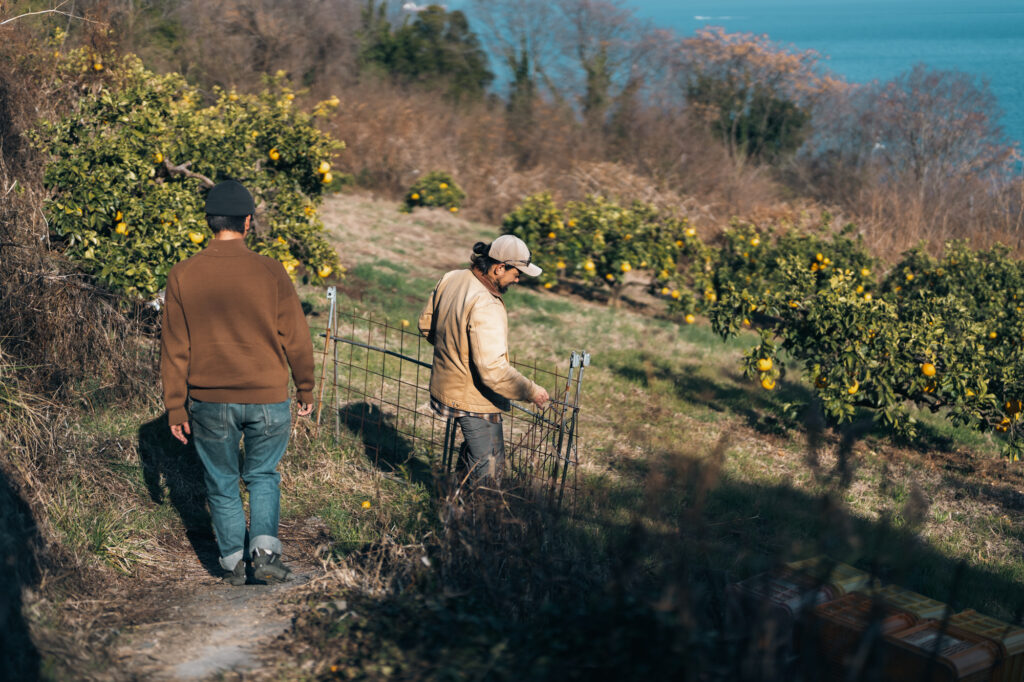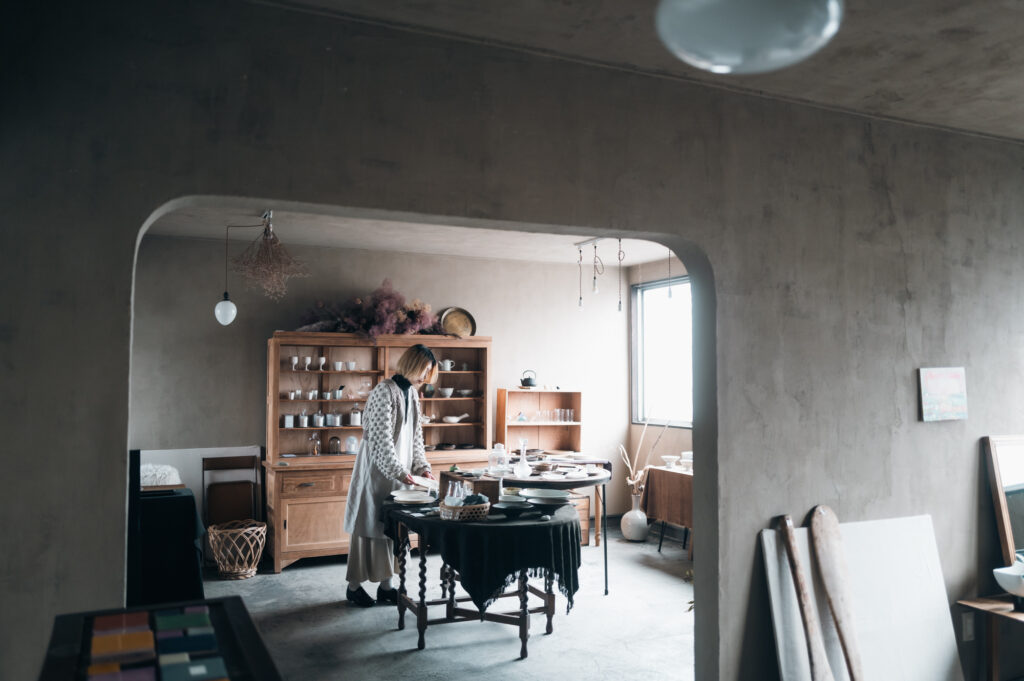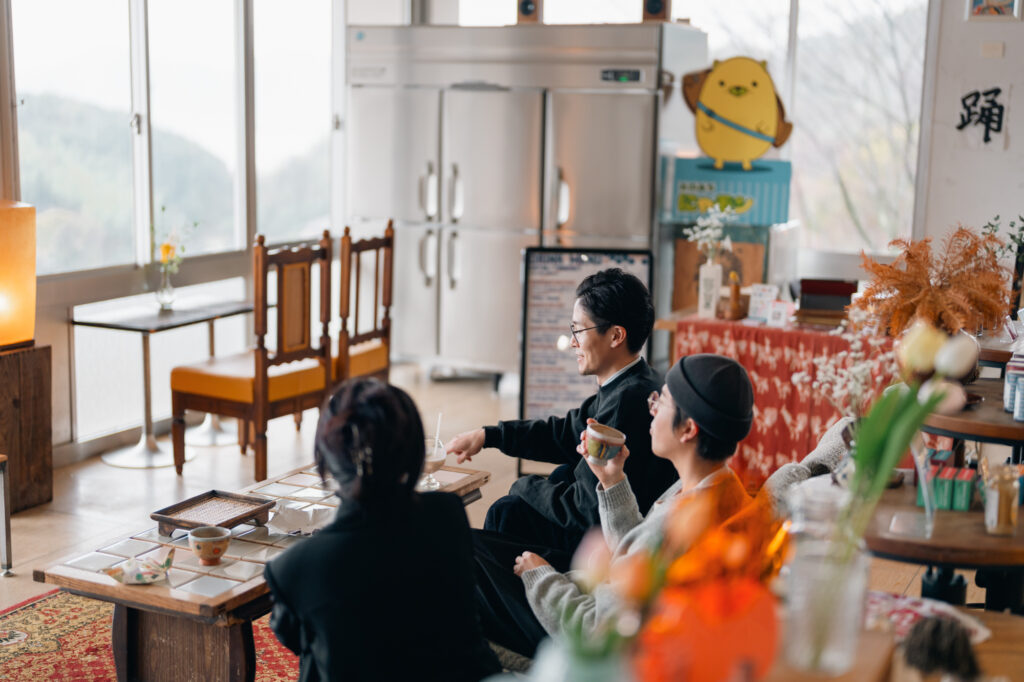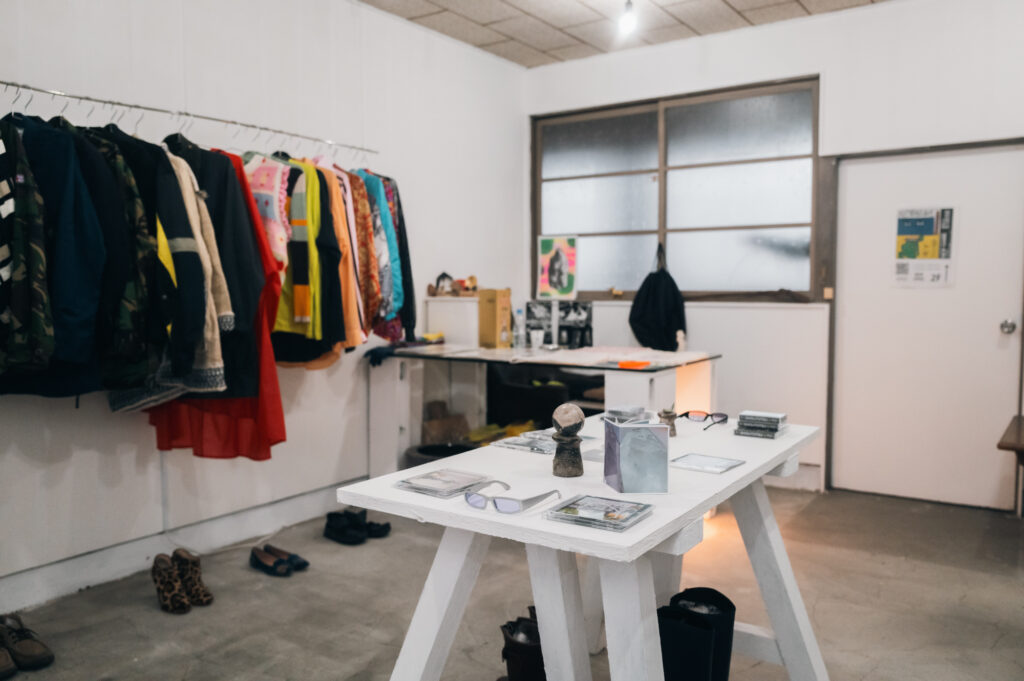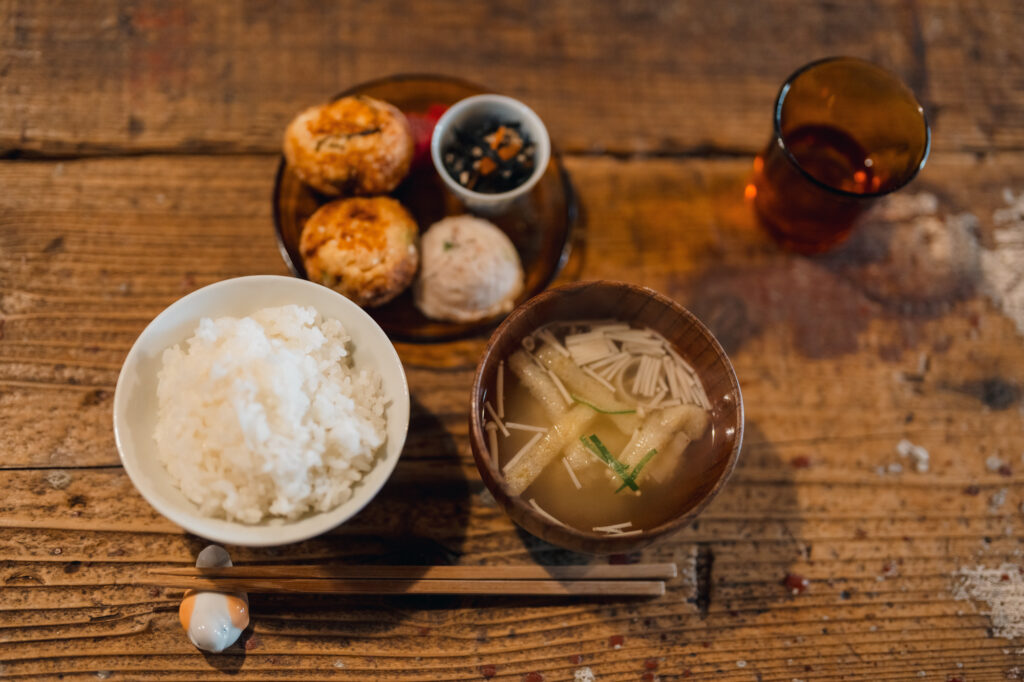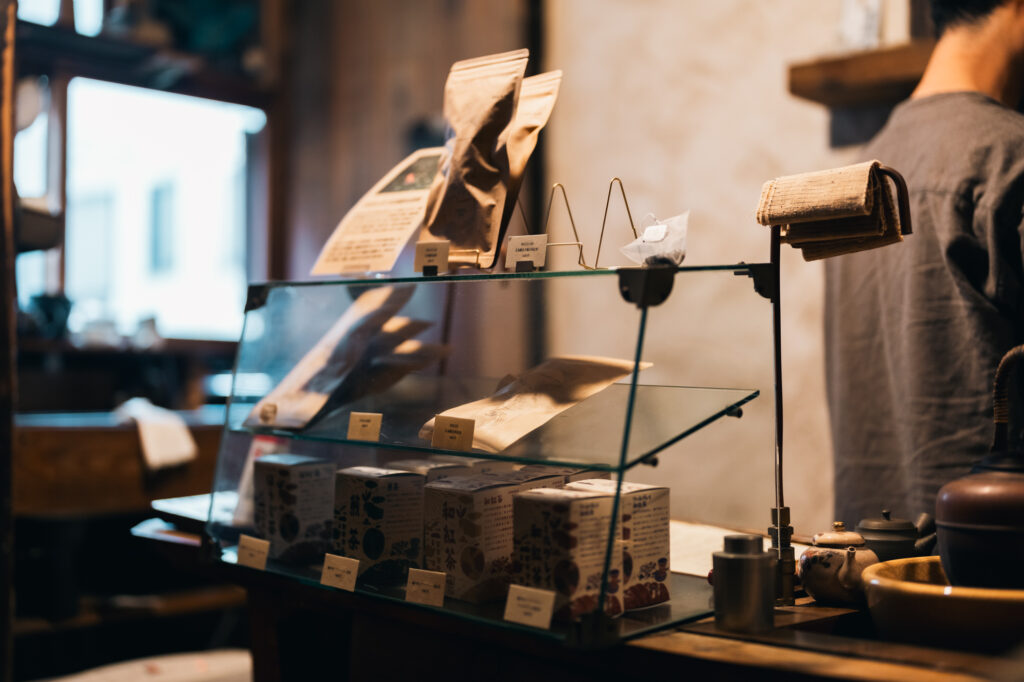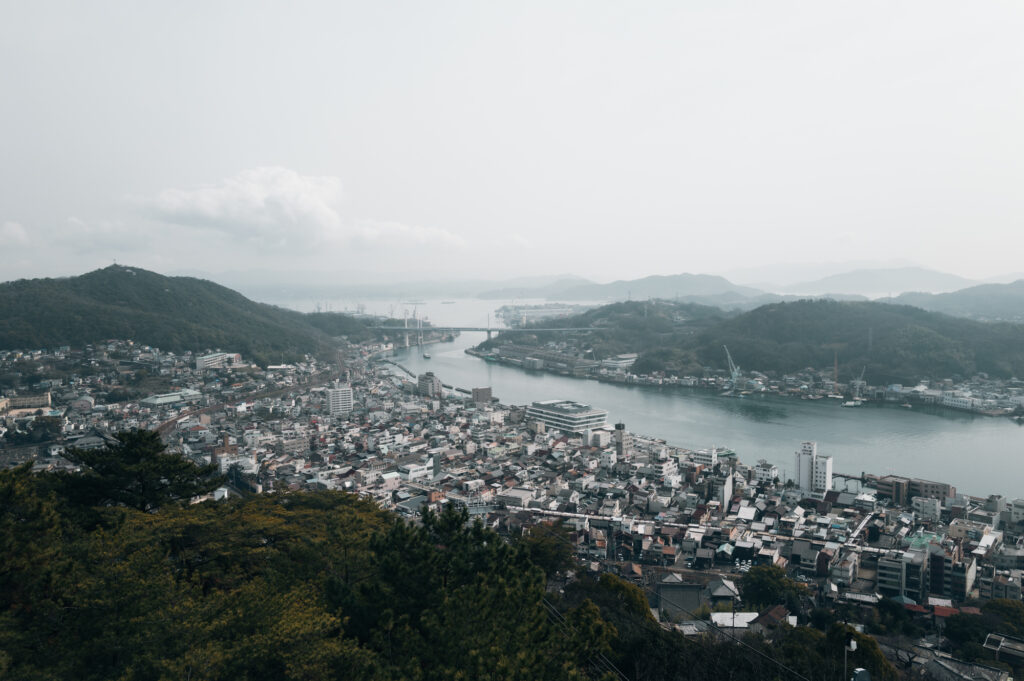
“Gradation” that only a local can discern
The “Shimanami Kaido” stretches approximately 60 kilometers between Onomichi City, Hiroshima Prefecture and Imabari City, Ehime Prefecture. It is also the name given to the expressway connecting six islands via seven bridges and linking Honshu and Shikoku – as well as being the nickname for the Nishi-Seto Expressway that runs parallel to the expressway. It opened about 25 years ago, meaning only a quarter of a century has passed since the people, culture, and products of the six islands began to circulate seamlessly as they do today. The ferry linking the islands is still in operation, and on weekdays, when only pedestrians and bicycles are allowed on the ferry, local students line up to get on and off forming a part of the daily scenery that gives rise to the feeling of island life.
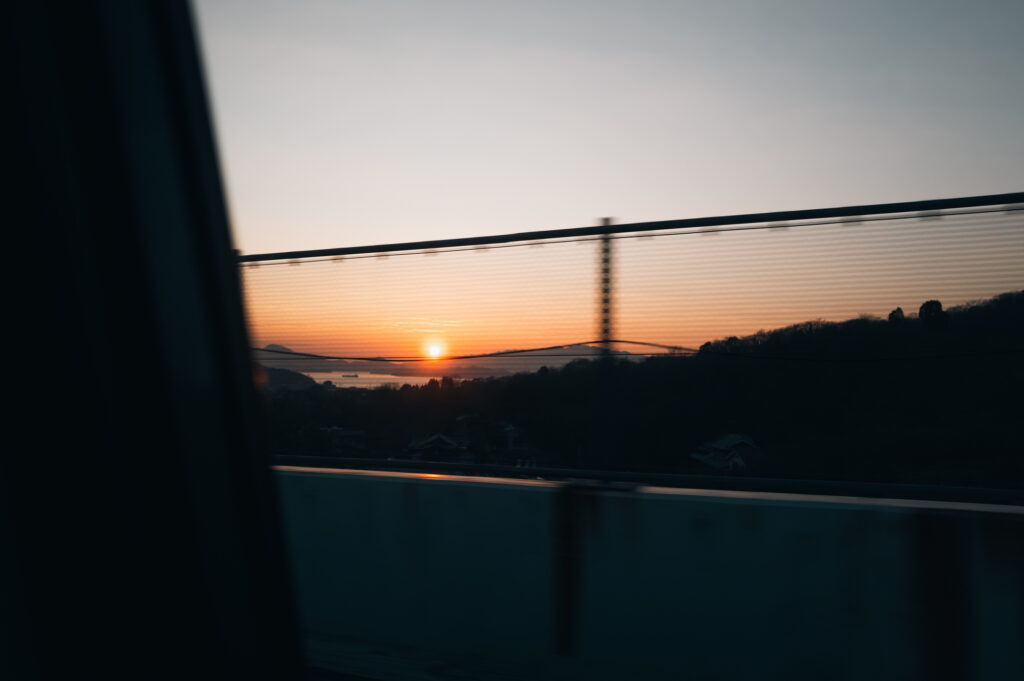
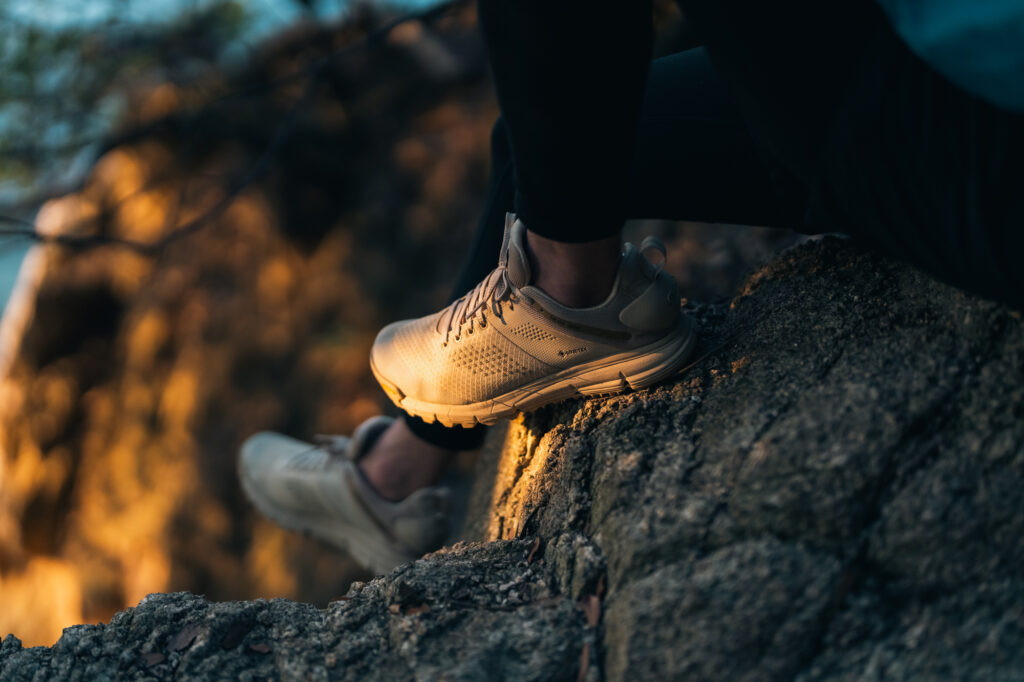

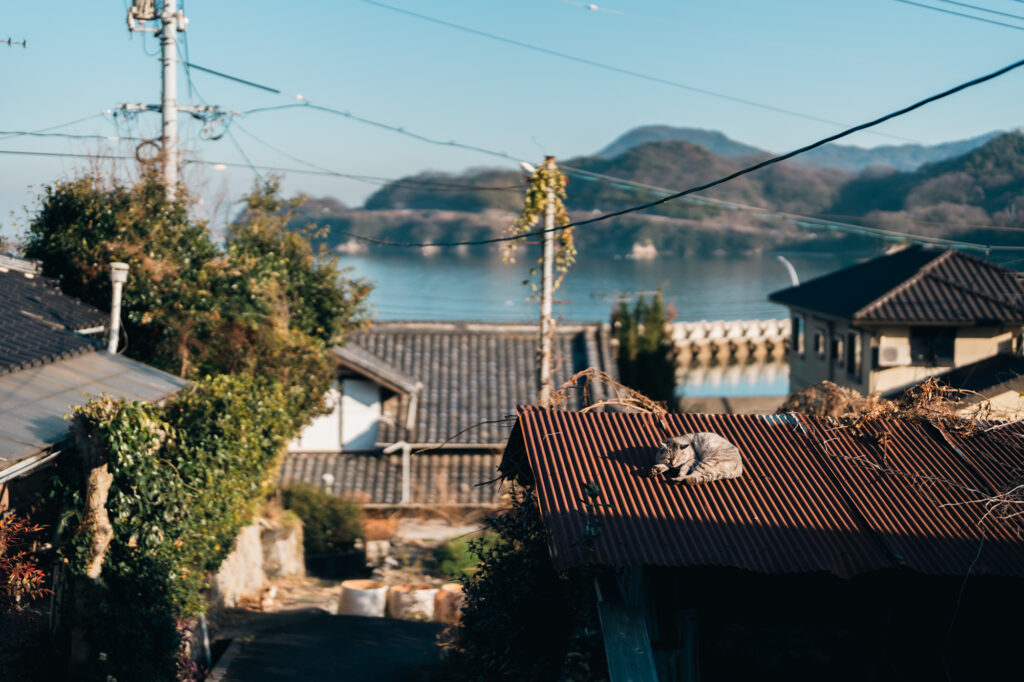
The group’s tour this time focused on Onomichi, the gateway to Shikoku, and Mukaishima, Inoshima, and Ikuchijima, three of the islands connected by the Shimanami Kaido highway located within Hiroshima Prefecture. The trip will be led by Ai, a tattoo artist who resides in the area, Yasutaka Kato of the agricultural unit “Minato-gumi,” and Kazuto Uehara.
We toured the stores and spots they had handpicked with the theme of “places that are open to both insiders and outsiders.”
“The charm of this region lies in its topography and geography.”
We heard such remarks several times during the trip, and Ai’s interpretation of them was memorable.
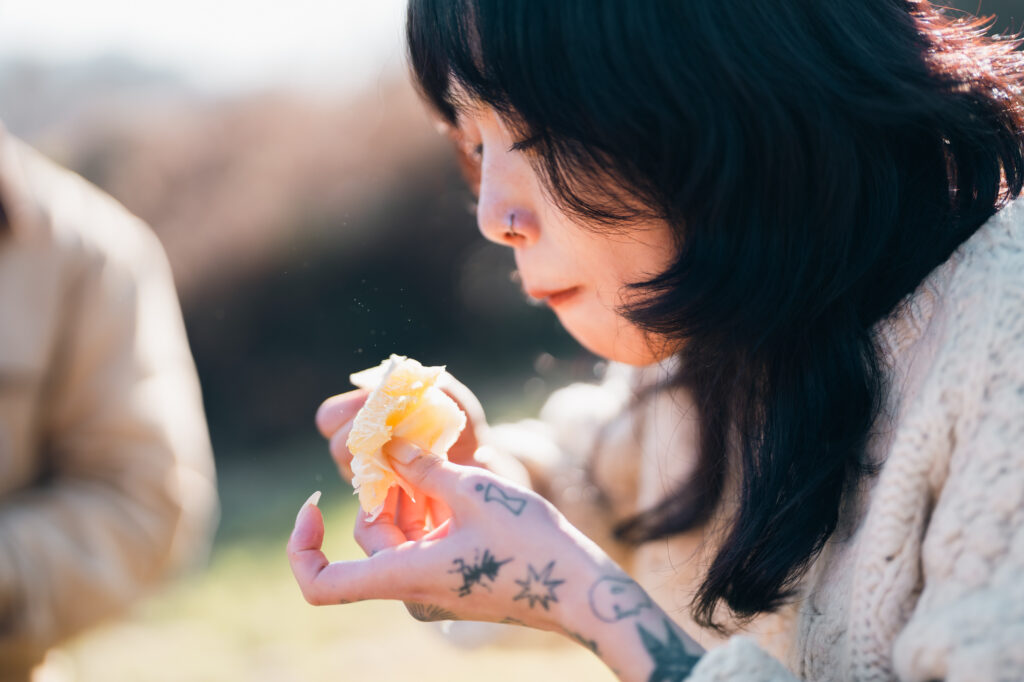
“Onomichi is a historic port town, and has always had an atmosphere that welcomes outsiders. There are many transplants、and while the city retains its historic buildings, there are also many new stores. It is a city with a strong element of fluidity. Assuming that Onomichi is the “downtown” of the Shimanami area, there seems to be a gradation in the distance and pace at which people live in relation to it. For instance, I think there is a certain class of people on neighboring Mukaishima Island who want to live on an island while also enjoying the city. Further away, Inoshima and Ikuchijima require a bridge fee (expressway fare) to access, and people are not that bothered about traveling to and from Onomichi. In other words, if you prefer the city, you should choose Onomichi; if you prefer to live on an island while traveling to and from the city, you should choose Mukaishima; and if you want to enjoy island life, you should choose Innoshima or Ikuchijima. The recent development of Setoda has changed the character of Ikuchijima Island somewhat.”(Ai)
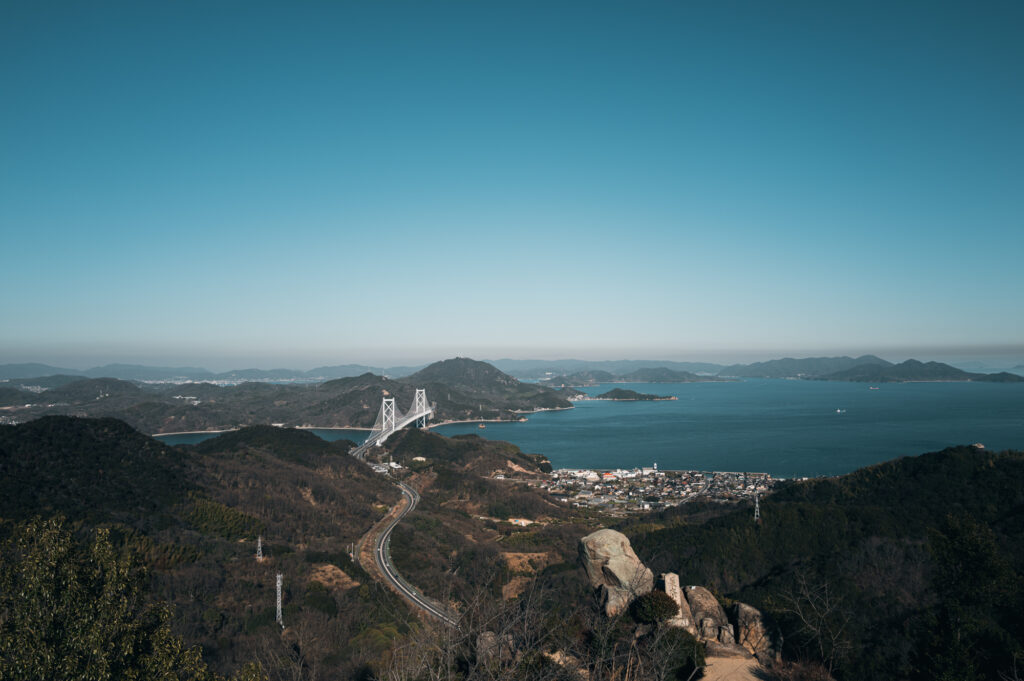
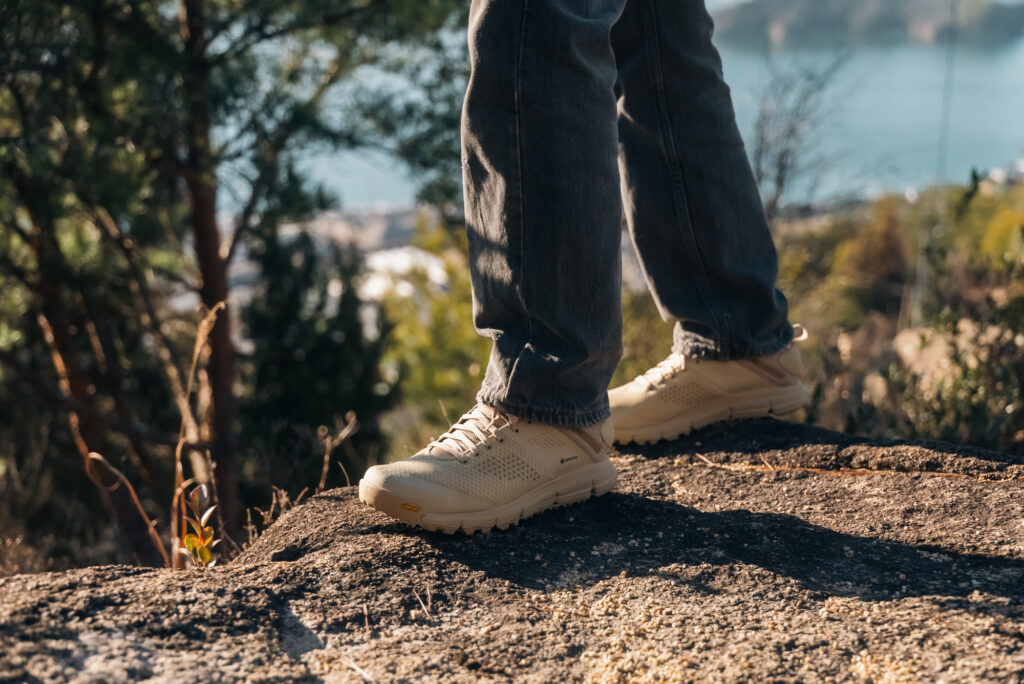
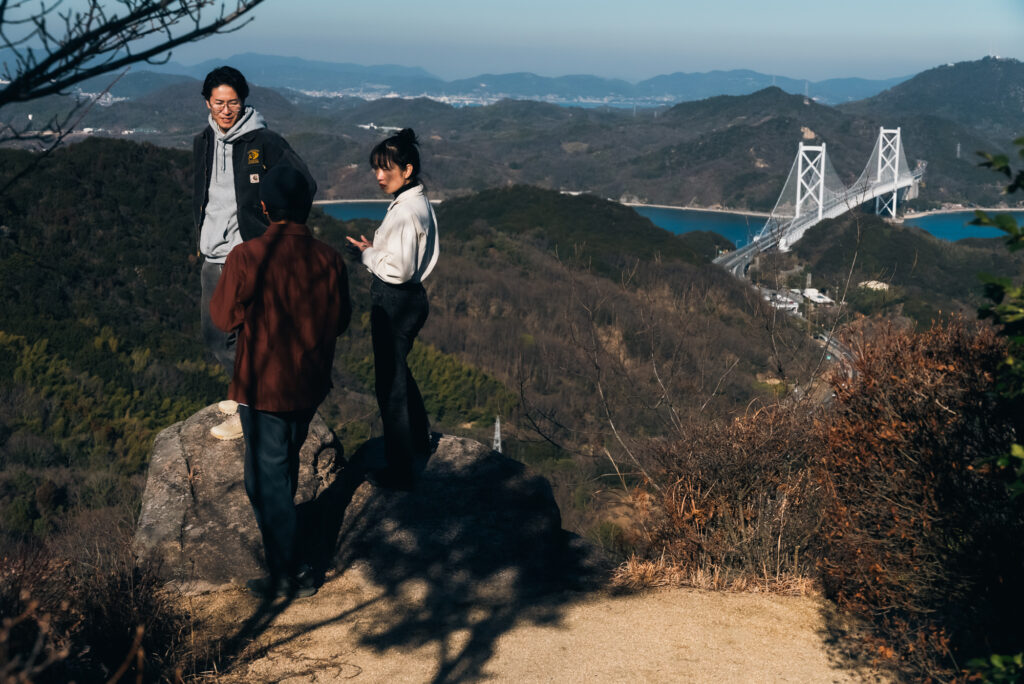
Onomichi, a city where old and new, domestic and foreign cultures intersect
Ai employs the “hand-poke tattoo” style, which has been gaining worldwide attention in recent years. Originally from Sasebo, Kyushu, she moved to Onomichi upon entering university, and now has a studio/atelier on Mukaishima, an island adjacent to Onomichi.
When I first enrolled at Onomichi City University, I hated everything and had no idea what I wanted to do or how I wanted to live my life. It was during those down-and-out student days that I moved to a shared house, and that’s when my life changed. At the shared house, I got to interact with people of all ages, interests, and hobbies, and I realized that the world is a big place, and that my life was by no means over yet.
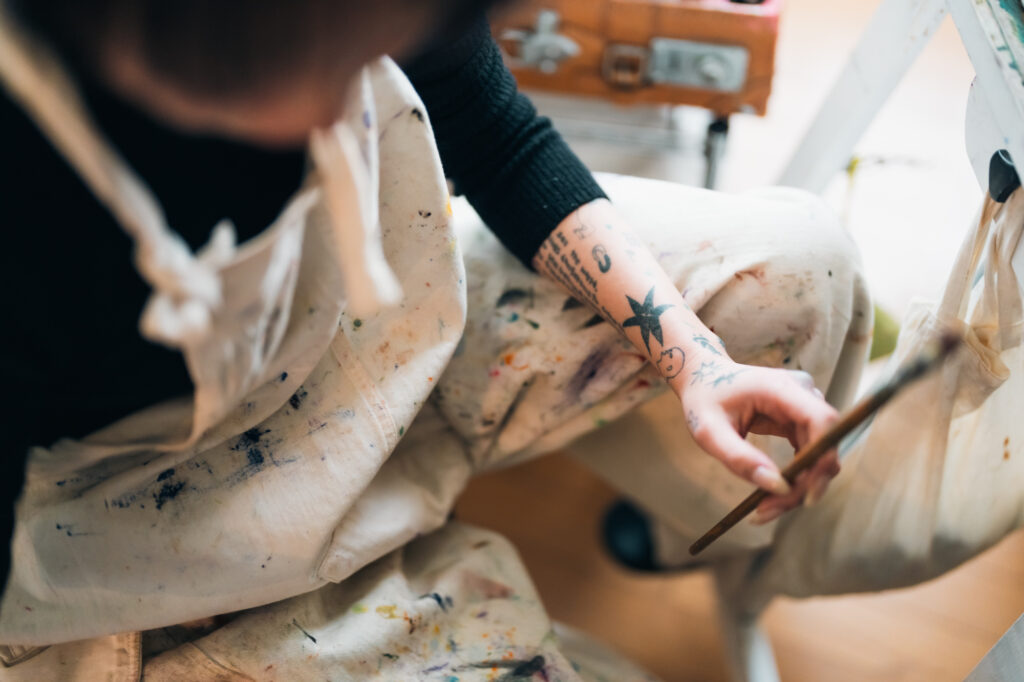
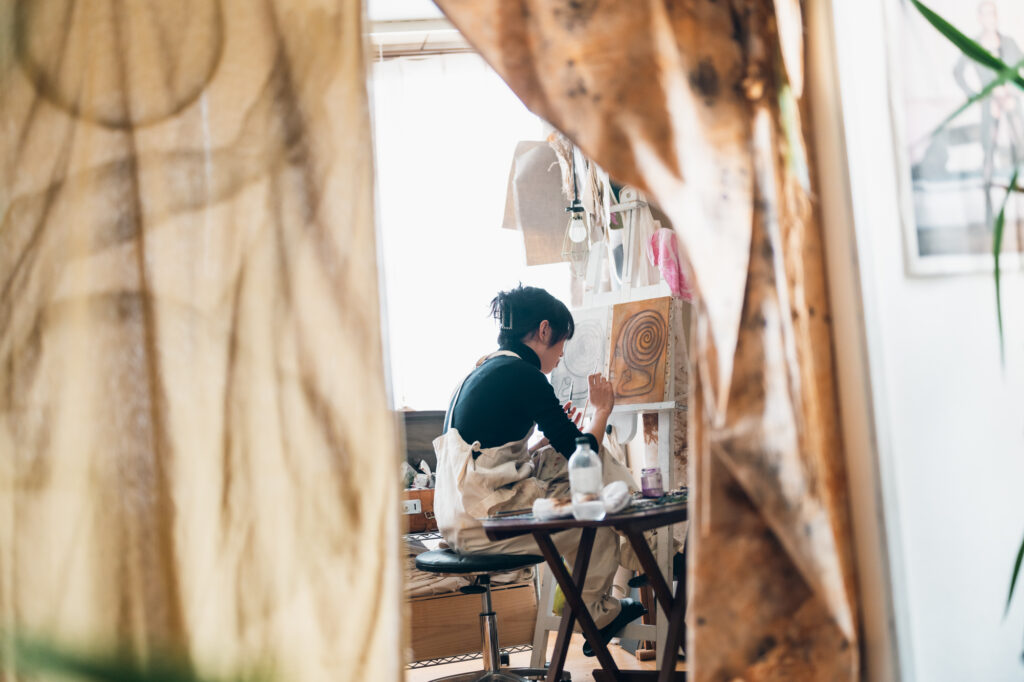
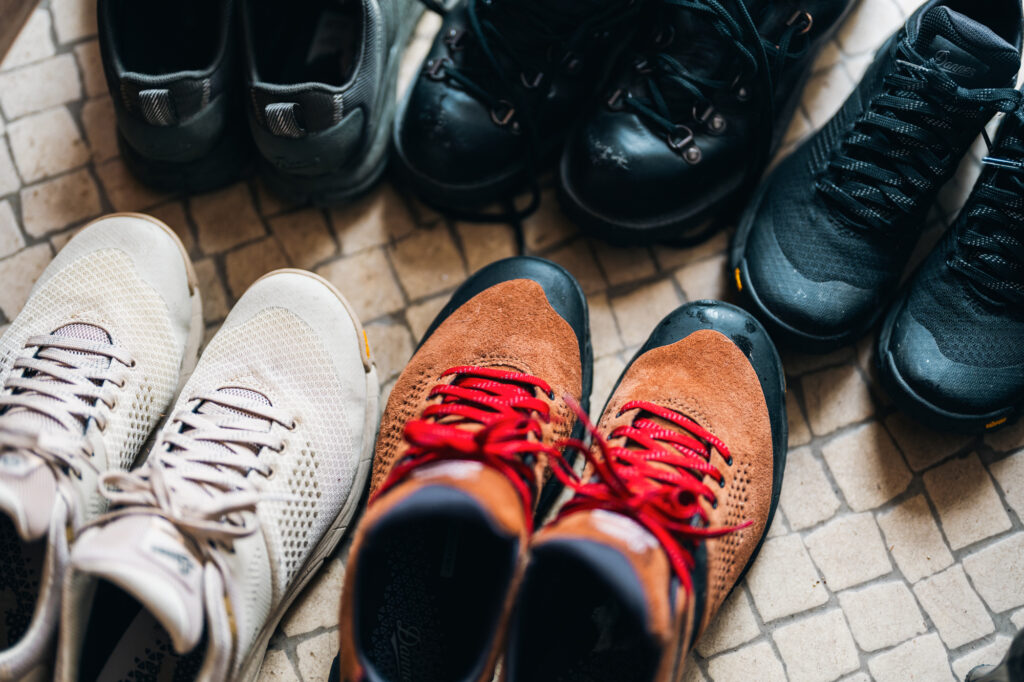
In Onomichi, the “Onomichi Vacant House Restoration Project” was launched in 2007 to preserve the old townscape with its historic temples and alleys. Spearheaded by citizens, transplants, and local students, this project has not only preserved historical buildings, but has also revitalized the city. It has done so by revitalizing old private homes as artist residency spaces, supporting resettlement, attracting new businesses, and encouraging new people and stores to come to the area. Ai was an art student at the time, and through her volunteer participation in this activity, she also came across the share house that became a turning point in her journey.
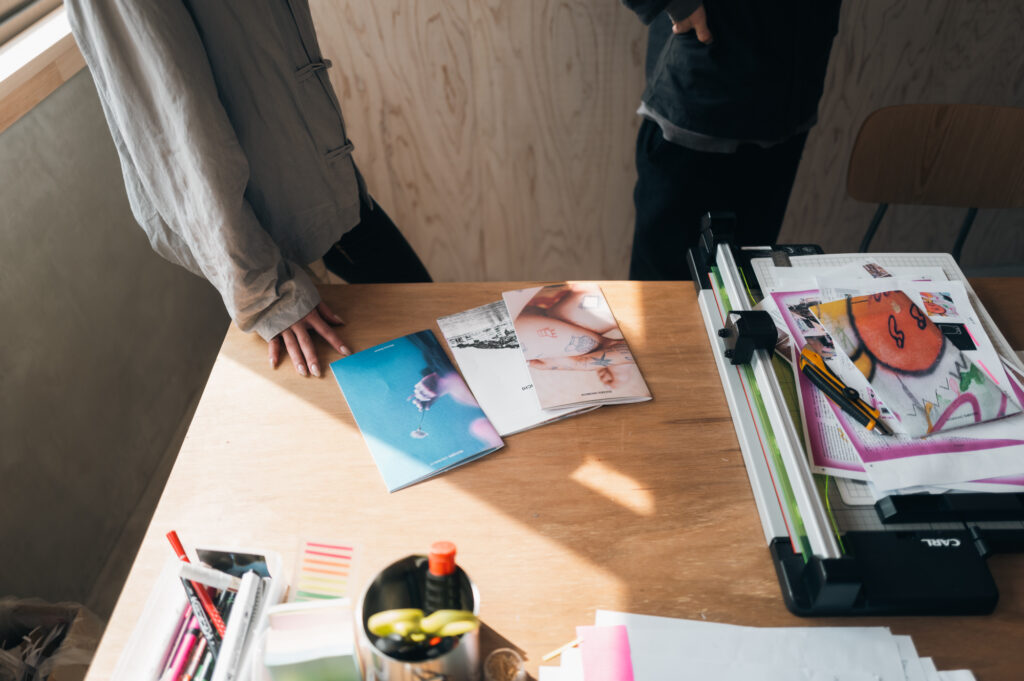
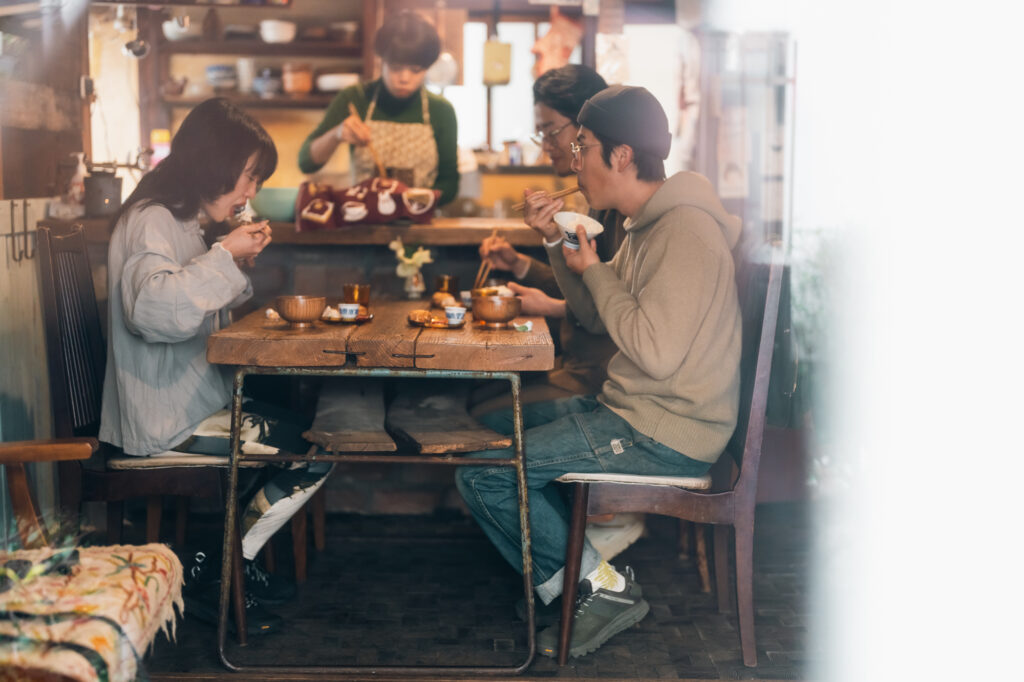
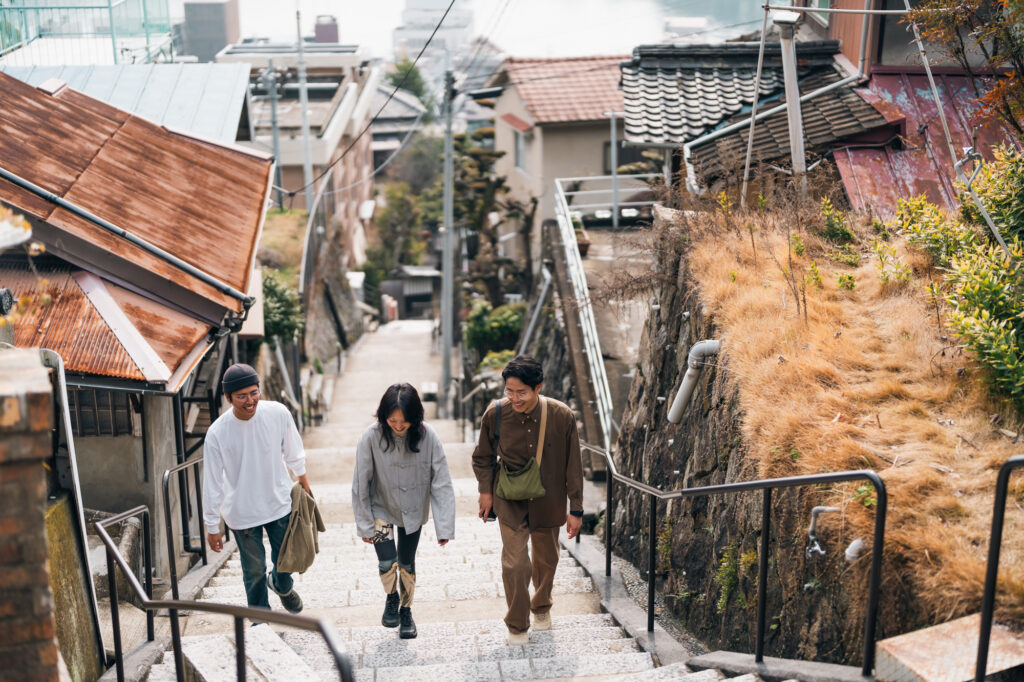
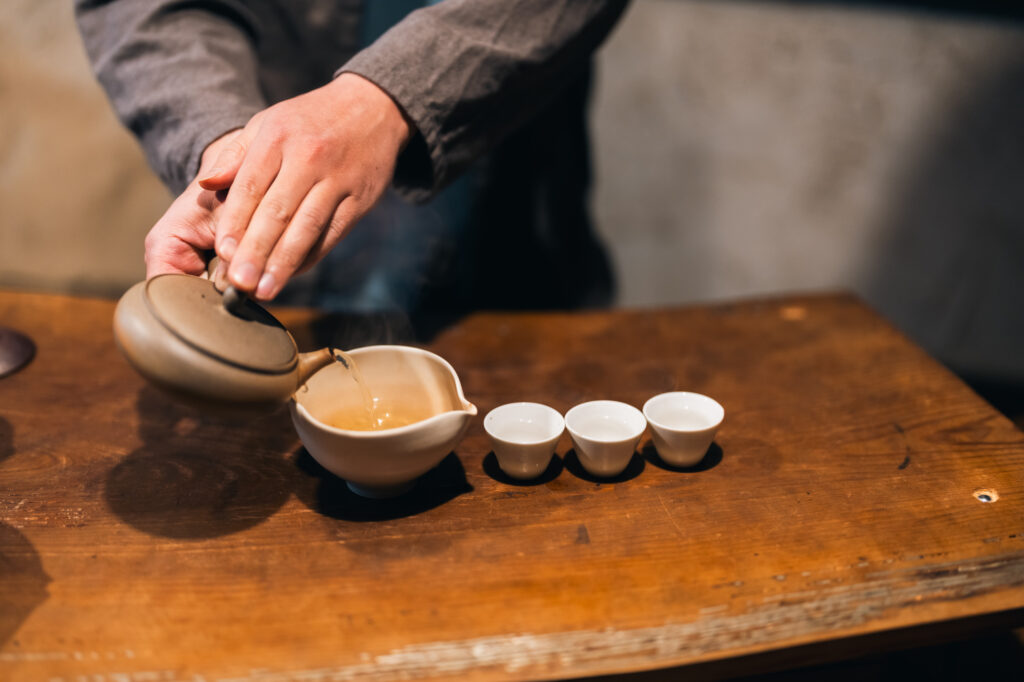
On the other hand, Yasutaka Kato (of Minato Gumi) grew up as the youngest child in a family that has lived in Onomichi for generations. During his high school years, he came into contact with university students and transplants who were active in the community.
“I think I acquired a kind of rebellious spirit from listening to the stories of the high-energy adults who flocked to Onomichi since I was a teenager. I was influenced by them to the point of intoxication for a time, but then, as if in rebellion, I began to want to look at the outside world. I started aspiring to achieve something and to do something different so that I could be as good as the people I admired!”(Kato)
Kato then went on to study at the National Chiayi University in Taiwan, where he majored in agricultural economics until dropping out of the university in 2018. After returning to Japan, he continued to study agriculture on his own, and shortly after, founded the “Minato Gumi” with his contemporaries.
The island’s lush landscape that re-centers everything
“Minato Gumi” is a 2-person unit with distinctive roles for both protagonists. While Kato steers the overall direction of the farming with his distinctive ideas and style, the work itself is done by the two of them. His partner Uehara’s role is visual production and documentation of the “Minato Gumi’s” activities. Uehara is from Innoshima, located between Mukaishima and Ikuchijima, which is also the hub of the Minato Gumi’s activities.
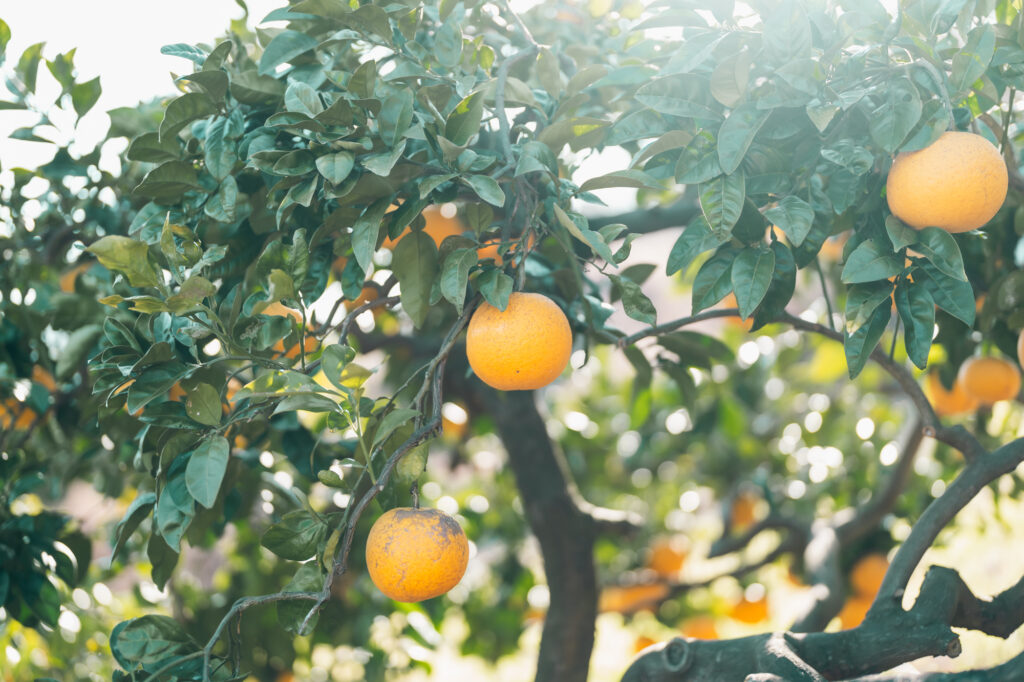
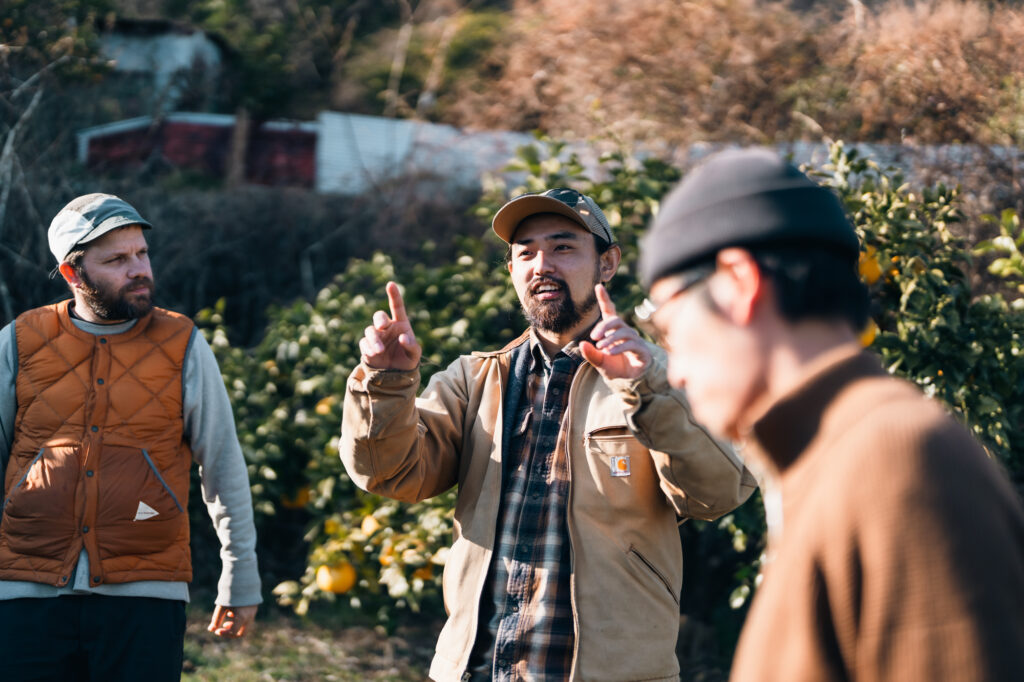
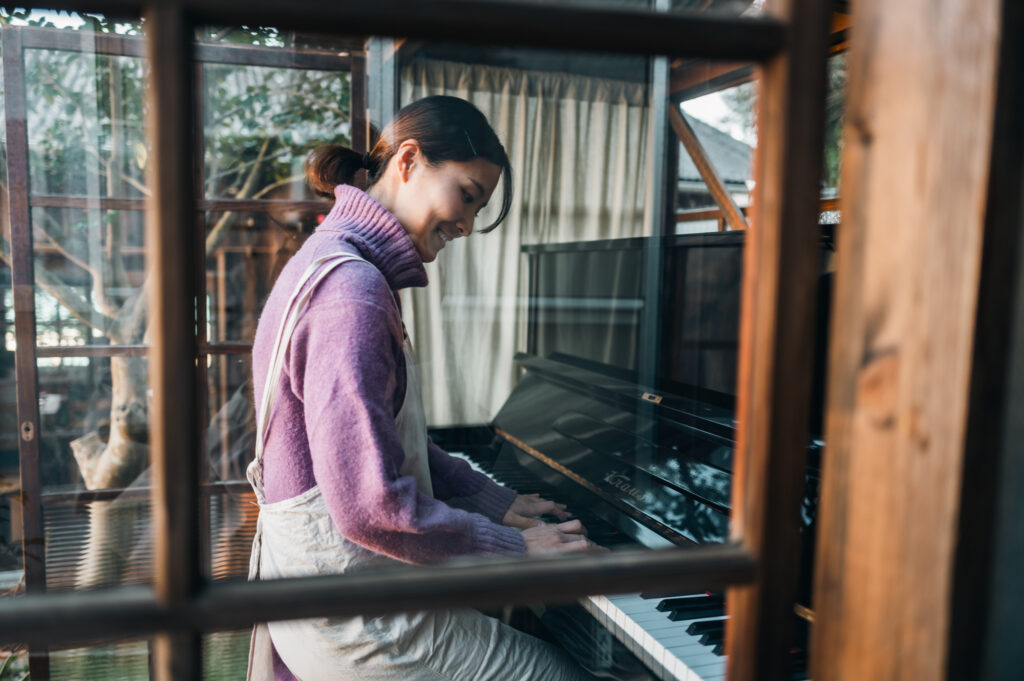
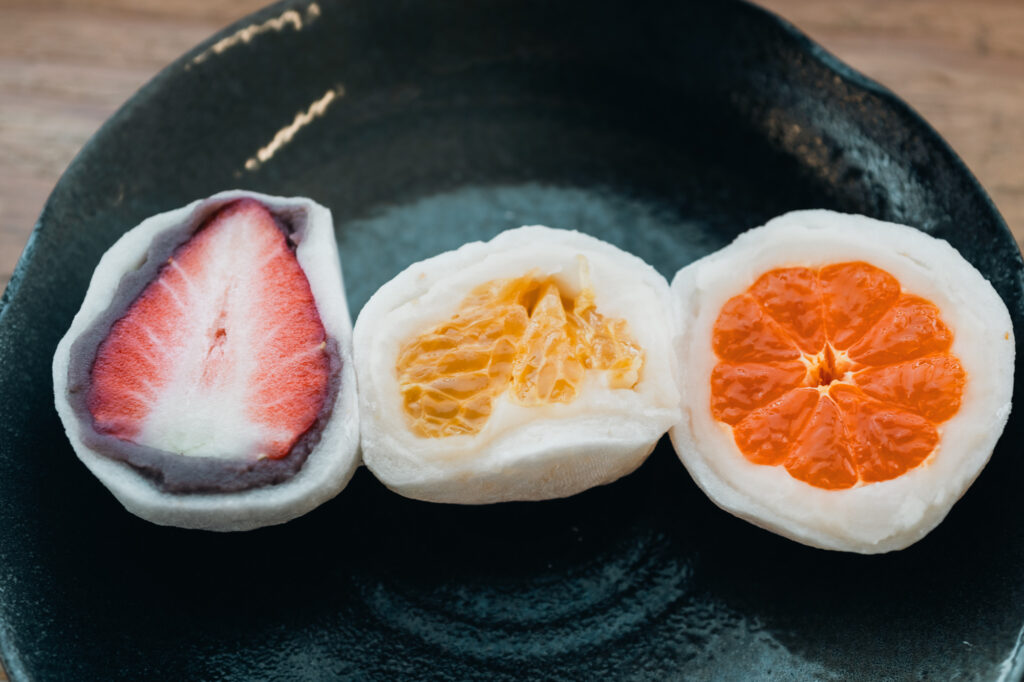
“I love cameras and often shoot Shimanami’s scenery outside of work – I think what makes Shimanami’s nature so special is its serenity. There are no lofty peaks with heavy snowfall nor raging ocean waves. That said, if you observe the serenity closely, it is changing from moment to moment, and the expressions all differ. The tides change dramatically depending on the time of day, and observing it every day makes you more aware of the subtleties of nature.” (Uehara)
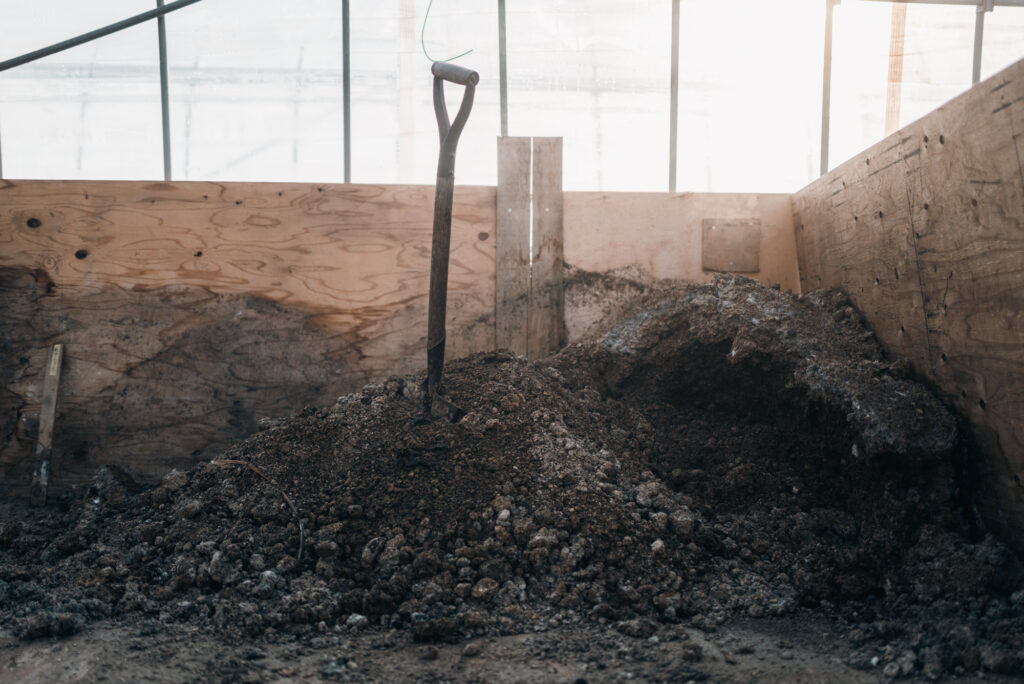
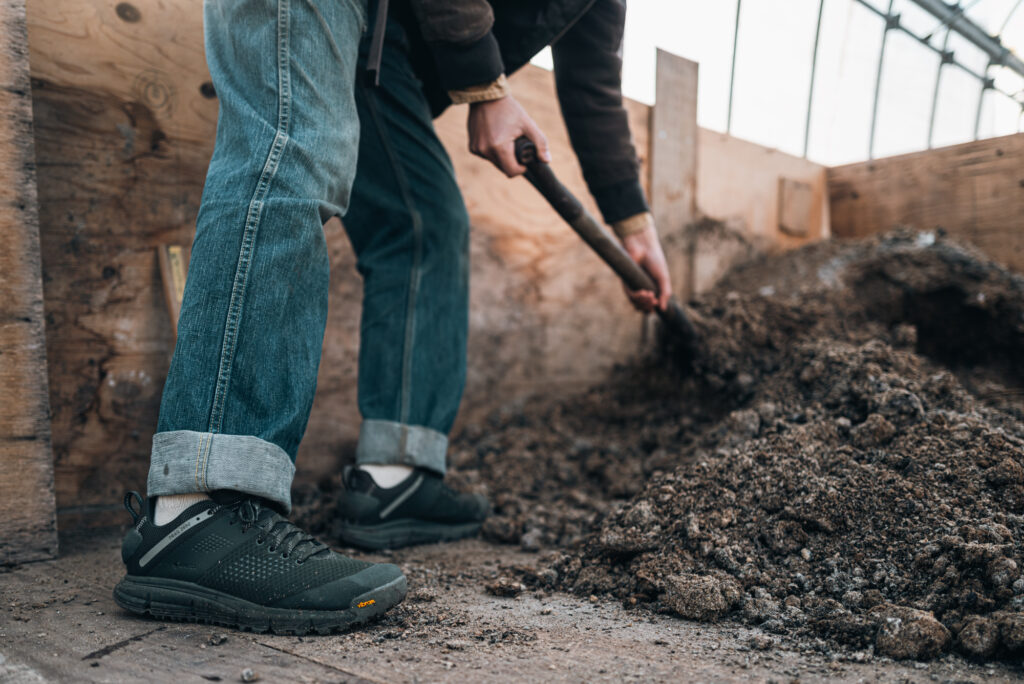
In sync with the word “serenity,” Kato described the charm of Shimanami’s nature in terms of “peace of mind.”
“During the busy farming season, I have a rough time of it (Lol). I get frustrated when things don’t go as planned because I’m dealing with nature. But after a long day, when I am putting away my farming tools in the yard of my house by the sea, I see the unchanging Seto Inland Sea stretching out in front of me. It’s like a great reset, or rather, it earths me no matter how I’m feeling. I’m always soothed by its calm, consistent expression, the kind of reassuring, receptive feeling like a mother emits.” (Kato)

Shimanami Kaido seamlessly connects the city and nature
The “TRAIL 2650 MESH GTX” sneakers by DANNER were worn by all three on this trip. These light trail shoes – which provide grip in all weather conditions and terrains – are very “Shimanami-esque” for Ai, who divides her time between the city of Onomichi and the nature of the islands.
“For me, the most stylish people Onomichi are the ones who wear clothes that suit their lives. They dress in a way that fits their lifestyle and activities. I think DANNER sneakers are just the right fit for Shimanami, as they allow you to stroll through nature and the city, ride a bicycle, and walk up hills with ease.” (Ai)
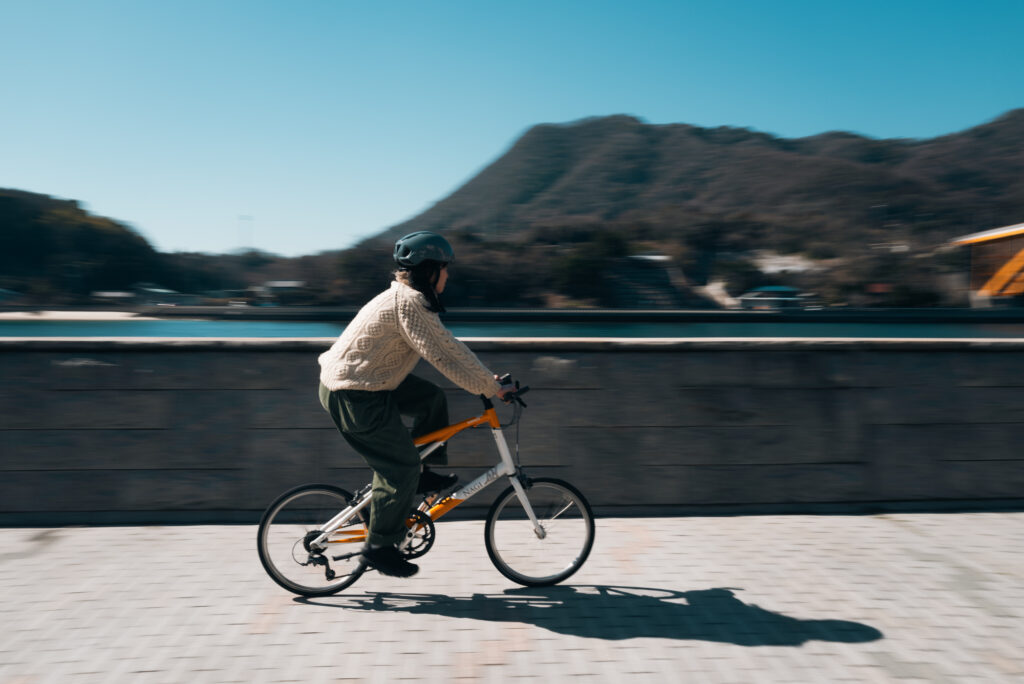
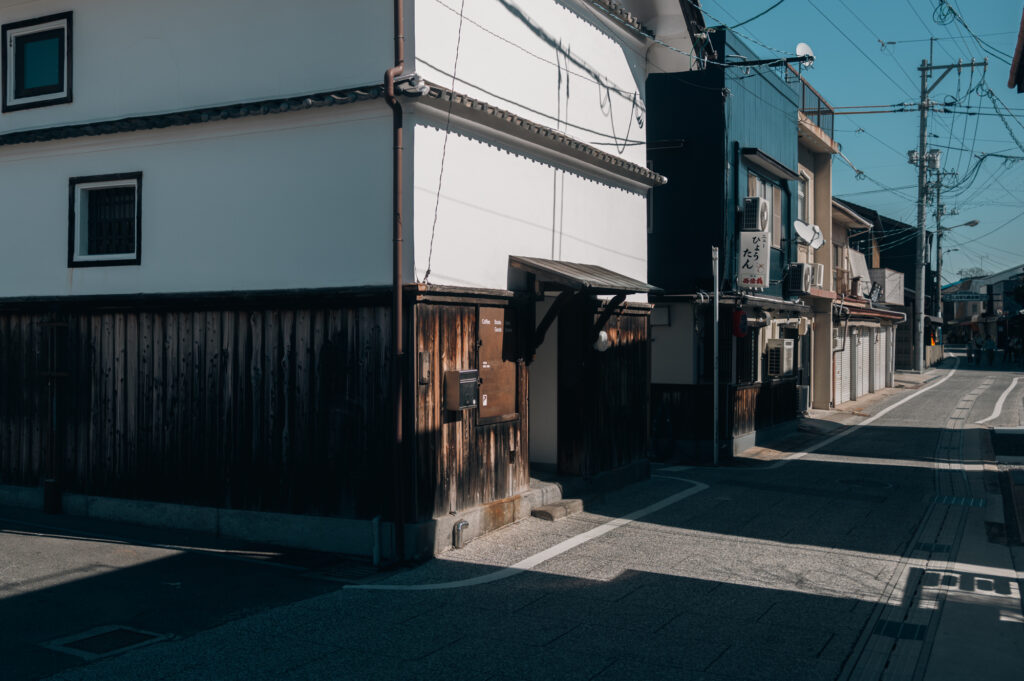
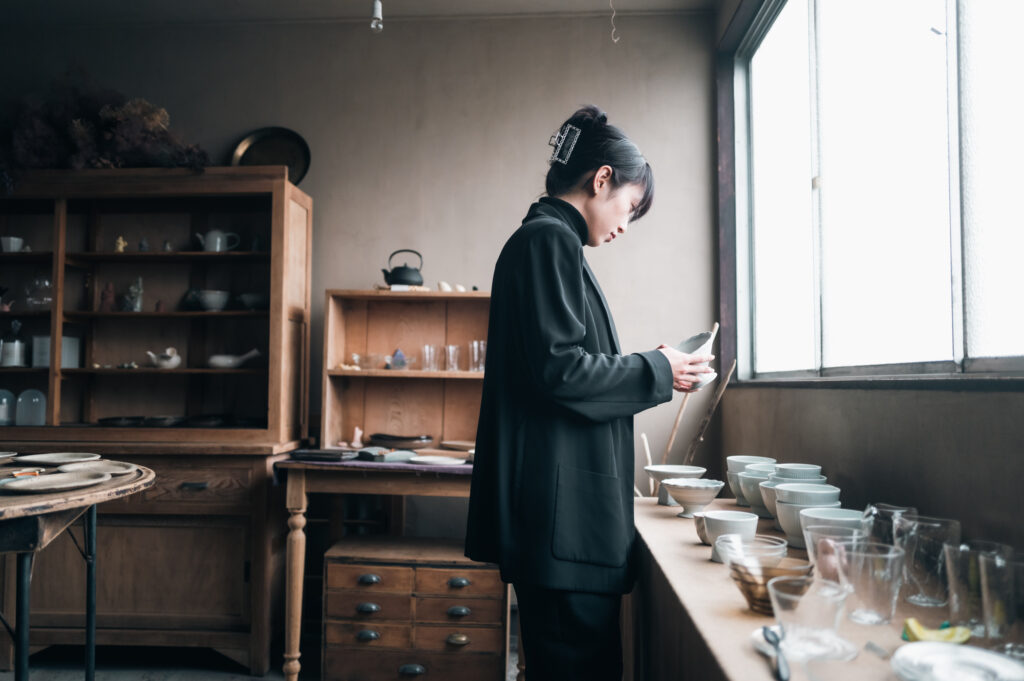
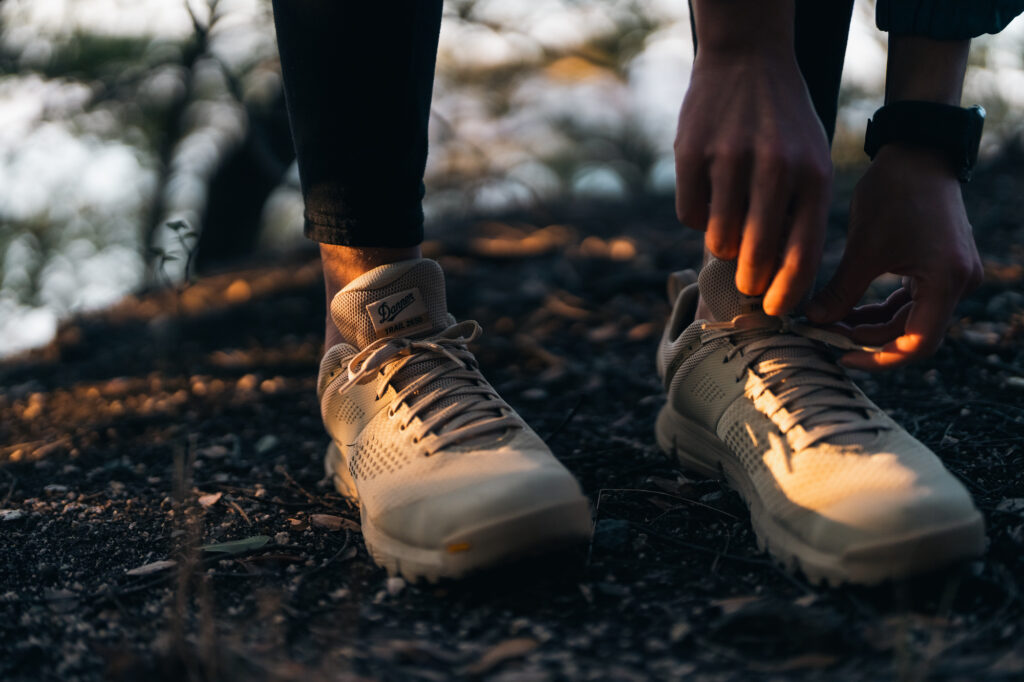
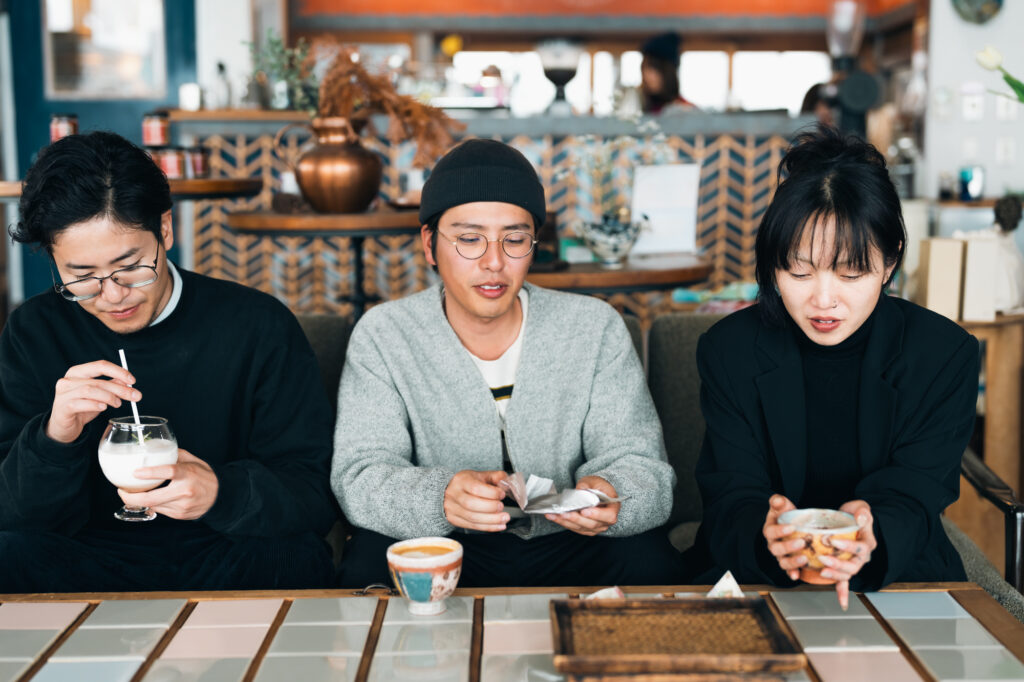
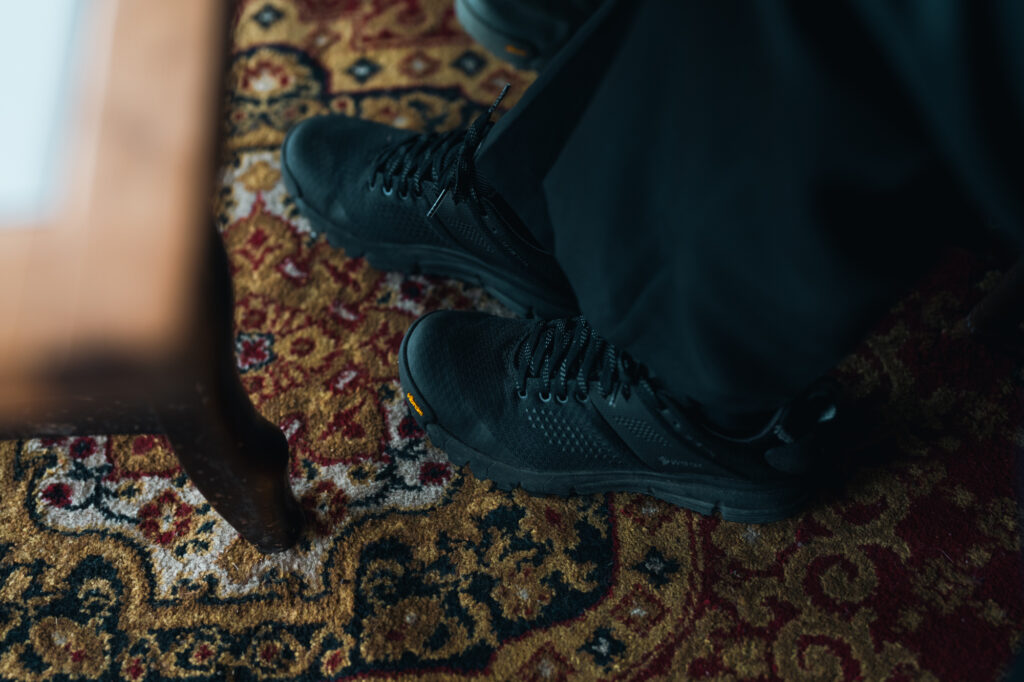
The common thread on this trip was “places open to both insiders and outsiders.” You might call them “open and friendly places” where locals gather and tourists also come and go.
For travelers from out of town, the value of a place where they can meet the local community can’t be overstated, but for those who have put down roots in the area, what is the value of visiting “open and friendly places” ?
“It’s a spot that reminds me to be yourself and recognize the preciousness of your own time.”
That is how Ai described the joints she chose for us this time. When we lose our way or come to a standstill, it is surely not only nature that pulls us back. It is nature, establishments, and people that “reset us.” And with these words, we parted company.
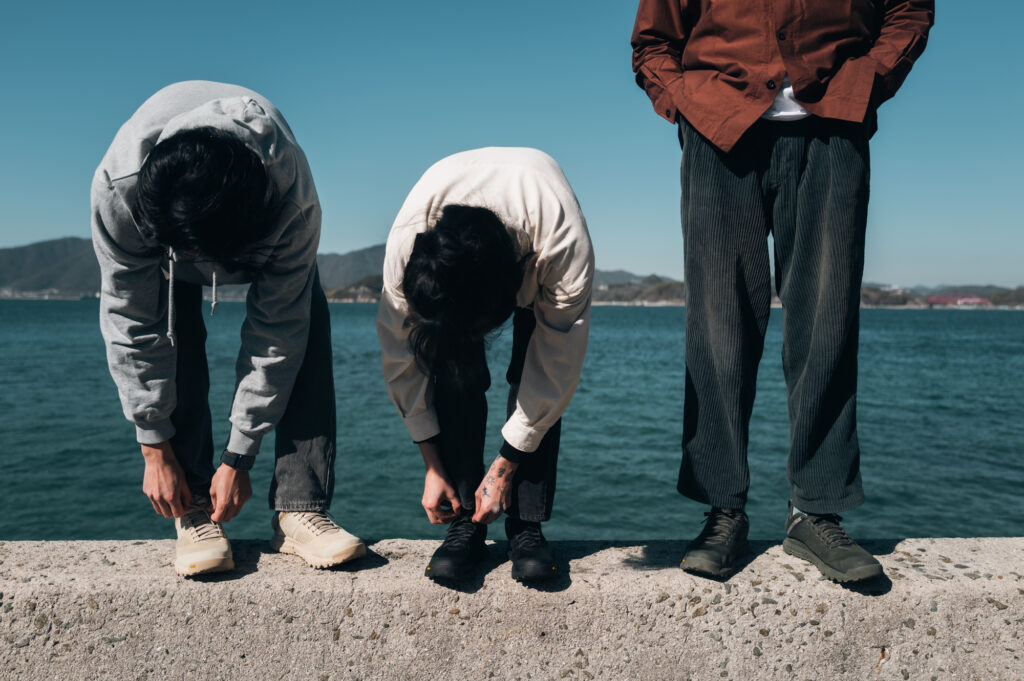
SHIMANAMI Guide
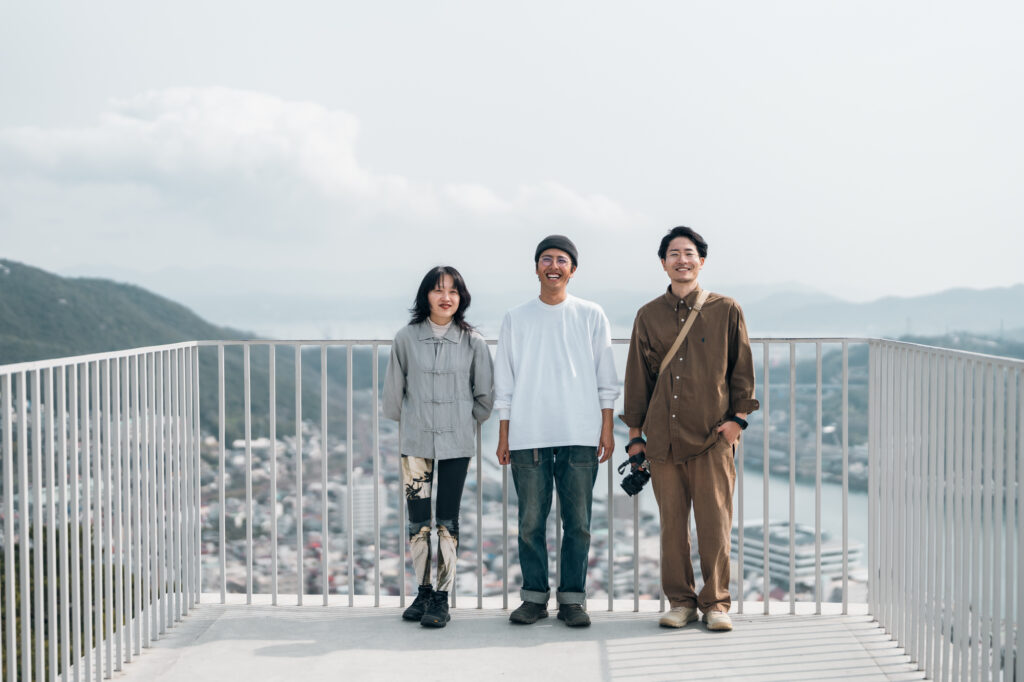
Ai / Artist (Left)
Proprietor of “Dalmatian Planet Tattoos,” a studio and hand-poke tattoo parlor in Mukaishima. Born in Sasebo. She is a multi-talented artisan who specializes in hand-poke tattoos, painting, dyeing, design, incense, and more.
Yasutaka Kato / Farmer(Middle)
Leader of Minato Gumi, a two-person agricultural group. Born in Onomichi. After graduating from high school, attended Chiayi National University in Taiwan, dropped out in 2018, and began studying agriculture independently. Currently based in the town of Ohama, Innoshima, he grows mainly summer vegetables and herbs using only pesticide-free, homemade fermented fertilizers.
Kazuto Uehara / Photographer, Designer(Right)
Responsible for the visual production of “Minato-gumi”. Born in Ohama, Innoshima. Besides photographing for the Minatogumi’s SNS and website, he also designs the Minatogumi Magazine and also works as a photographer and designer based in Innoshima.












